Whose Flag Is It Anyway? How Patriotism Becomes a Weapon in the Culture Wars
A flag, by itself, is a piece of cloth. The Union Jack, the St. George’s Cross - they are emblems stitched from colour and pattern, nothing more. To say that they are inherently racist is nonsense, and those who defend their display on that basis are correct in the most literal sense. Yet symbols never exist in a vacuum. Their meaning depends on where they are placed, when they are raised, and what stories are being told around them.
This is the tension that lies at the heart of the latest row over flag-waving in England. On the face of it, community groups like the Wythall Flaggers claim nothing more sinister than a desire to brighten the streets with national pride. It’s not racist to love your country, they insist. But timing matters, and so does placement.
When England plays football tournaments in the Euros or the World Cup, the St. George’s Cross is everywhere: fluttering from pub gardens, taped across car bonnets, painted on children’s cheeks. In that context, the flag is a symbol of shared joy - of belonging through sport. It unites strangers in a common cheer when Harry Kane scores, or when Jordan Pickford saves a penalty. Few would suggest that these moments are exclusionary; they are expansive, broadly bringing people together in a burst of collective identity.
But in the summer of 2025, the context could not be more different. Far-right protests have erupted outside asylum seeker accommodation, from Essex hotels to Midlands towns. Daily headlines rail against ‘small boat crossings.’ Politicians scramble to sound tough on immigration. And it is precisely now that flags begin appearing not in gardens or on stadium terraces, but on lampposts, telegraph poles, and even painted across roundabouts.
Placed in these spaces, the flags do something more than express pride: they mark territory. They turn public infrastructure into a canvas of ownership. The message is not simply we are proud to be English, but this place is English- it belongs to us, not to you. Reform UK councillors have decided to leave the flags in place in the areas they control. This is done to side with the so-called patriots.
A flag is never just a flag. In moments of cultural anxiety, it becomes a weapon - a way of drawing a line between ‘us’ and ‘them.’
The Benign Face of the Flag
To understand why the present controversy matters, it helps to remember that flags can - and often do - carry far gentler meanings. For most people in England, their earliest memories of the St. George’s Cross or the Union Jack are bound up with moments of sporting triumph. The World Cup and the Euros dominate, of course: summers when bunting decorates pub gardens, flags flap on cars, and schoolchildren paint red crosses on their cheeks.
But it isn’t just football. The Union Jack appears on crowds at the Olympics when Team GB are in full stride, uniting athletes and fans in a moment of collective pride. It ripples across Centre Court when Andy Murray or Emma Raducanu take Wimbledon glory. It turns up at the Ashes when an England side finally outplays Australia. These occasions share a common thread: the flag becomes shorthand for celebration and belonging, a visual chorus of support.
In these contexts, the flag is festive and unthreatening. It is less about exclusion than inclusion - an invitation to join the wave of national pride, however temporary. When the match, tournament, or Games end, the flags come down. Life resumes. The symbolism is cyclical, rising and falling with the sporting calendar, never intended as a permanent mark on the landscape.
This is why defenders of today’s flag campaigns lean so heavily on the sporting analogy: if it was acceptable then, why not now? On the surface, it sounds persuasive. But this framing misses the decisive role of context. A flag waved at Wembley or draped over shoulders in Trafalgar Square is a gesture of collective joy. A flag tied to a lamppost outside an asylum hotel, or painted permanently across a roundabout, tells an altogether different story.
The design may be the same, but the placement, timing, and intent transform its meaning. One is a passing moment of unity; the other a permanent mark of ownership. And this is where the benign face of the flag begins to shift into something more territorial.
The Territorial Turn: Flags as Markers of Ownership
Flags fluttering from pub gardens during the World Cup or wrapped around shoulders at the Olympics belong to the realm of celebration. They appear, they vanish, and their presence is bound to a specific event. But the flags that have sprouted this summer on lampposts, telegraph poles, and roundabouts in towns and villages across England are different in kind. They are not tied to sport, nor to fleeting communal moments. They are markers, fixed into the fabric of civic space.
Placed on street furniture or painted across a roundabout, the flag becomes territorial. It says: this space is English, it belongs to us. In this context, the act is less about joy than about ownership. It carries the unmistakable edge of exclusion: if this place is ‘ours,’ then by implication it is not ‘yours.’
This is not an entirely new phenomenon. The St. George’s Cross, in particular, has long been a contested symbol. In the 1970s and 1980s, the National Front and other far-right groups claimed it as their banner, linking English identity with xenophobia and racial violence. For many years afterwards, ordinary people hesitated to display the flag at all, fearing they would be mistaken for extremists. The association between patriotism and nationalism has never been fully broken - and today’s roundabout paintings and lamppost displays are part of that inheritance.
The timing is what makes the current wave so charged. These displays are proliferating at the very moment when far-right protests gather outside asylum seeker accommodation. The country is facing a bleak economic horizon: bills rising, schools and hospitals stretched, GP services buckling, wages stagnant, everything more expensive. People are on the edge. In such conditions, nationalism offers the illusion of control and pride at a time when both feel in short supply.
Sections of the press feed this drift relentlessly. Readers are told that asylum seekers are living in hotels, sometimes with private doctors, while ‘ordinary Brits’ queue for overstretched NHS appointments. Articles rehash demographic anxieties: that Britain was once a Christian country, that immigration has altered the character of local towns, that ‘we’ are somehow being displaced. The flag, planted on roundabouts or strung across lampposts, condenses all this into a single image: a country being reclaimed for its rightful owners.
And it is here that the parallel with America becomes unavoidable. The spectacle of flags on roundabouts echoes the Make America Great Again rallies across the Atlantic. The slogan does not need to be spoken: the imagery does the work. Reform UK’s rhetoric is little more than a copy-and-paste from Donald Trump’s playbook - a promise to ‘Make Britain Great Again,’ to restore a mythical past of order and homogeneity that never really existed. What looks like eccentric local flagging is, in fact, part of a much wider populist script.
The flag, in this light, is not just an emblem but a boundary marker, and also a billboard. It advertises a politics of grievance, casting ordinary frustration with failing public services into the mould of nationalism. It divides the world into those who belong and those who do not. And in that divide lies fertile ground for the far right, who thrive on precisely this ambiguity.
The Right’s Parasitic Patriotism
Few political currents exploit ambiguity as effectively as nationalist populism. Figures such as Nigel Farage, and movements like Reform UK, thrive in the grey zone where patriotism bleeds into nationalism, where ‘love of country’ is used to mask hostility to outsiders. At the harder edge, street agitators such as Tommy Robinson push the same symbols further, making the exclusionary intent unmistakable. Between them lies a spectrum of actors who all understand that the flag is a perfect vehicle for their message.
To the casual observer, a St. George’s Cross tied to a lamppost can be dismissed as nothing more than local pride. But to those already steeped in anti-migrant rhetoric, it is a signal: this is ours, not yours. The potency lies in its deniability. When critics object, flaggers can retreat into mock innocence - it’s just a flag, why are you overreacting? When sympathisers rally to the symbol, they nod knowingly, hearing the dog-whistle loud and clear.
Reform UK councils refusing to remove flags from street furniture have sharpened this ambiguity into policy. By sanctioning the displays, they give this symbolism civic legitimacy. What begins as fringe territorial marking is folded into the mainstream of local government, framed as the defence of ‘ordinary people’ against ‘elites’ who would dare to tear the flags down (The Guardian, 2025). A binary emerges: leave the flags and you are a patriot; remove them and you are a traitor.
The darker connotations of the St. George’s Cross are not new, but they have been amplified since Brexit. ‘Take back control,’ the Leave campaign’s defining slogan, wrapped itself in imagery of sovereignty and national identity. The flag became not just a footballing emblem but a political one, standing for a reclaimed, exclusive version of Englishness (Sobolewska & Ford, 2020). The current wave of roundabout paintings and lamppost displays taps directly into that mood: control asserted not through ballots this time, but through territorial symbolism.
Robinson and his allies, positioned firmly on the far right, interpret these flags as an outright ethnic marker. Farage and Reform UK, operating further inside the bounds of mainstream respectability, lean on the plausible deniability of patriotism. Yet they are symbiotic. Street-level activism makes the symbolism visible and provocative; populist politicians launder it into electoral discourse. Both thrive on the uncertainty of what the flag really means.
And therein lies the danger. Every time critics hesitate to challenge the displays for fear of appearing unpatriotic, the tactic succeeds. Every time councils endorse them in the name of ‘community pride,’ the right gains another foothold in defining national identity. What appears eccentric or trivial - a flag on a roundabout, bunting on a lamppost - is in fact a slow colonisation of public space, and with it, of the story of who belongs.
The Trap of Innocence: ‘It’s Just a Flag’
Every time the flag is challenged, its defenders retreat to the same line: it’s just a flag. The phrase works like a shield. By reducing the St. George’s Cross to nothing more than cloth and colour, those who plant it on lampposts or paint it on roundabouts can cast their critics as paranoid, oversensitive, or even unpatriotic.
This ‘innocence defence’ dovetails with another grievance that has become central to Britain’s culture wars: the idea that so-called ‘wokeism’ has made it shameful to be proud of your country. The argument runs like this: Scots can wave the Saltire, Americans can drape themselves in stars and stripes, migrants can take pride in their national heritage, but the English are forbidden to show their flag without being branded racist. This grievance is about resentment, and a sense of being silenced.
The trope echoes Brexit’s mythology of the ‘silent majority’ - ordinary people who had supposedly ‘had enough’ of being ignored, patronised, or sneered at by elites (Goodwin & Eatwell, 2018). In this telling, the simple act of flying a flag becomes an act of rebellion against metropolitan disdain. Reform UK and its allies lean heavily on this story: those who defend the flag are patriots, those who remove it are part of an unaccountable elite, more loyal to outsiders than to their own.
The power of this rhetoric lies in how it boxes in critics. Condemn the flag displays and you prove the populists’ point: that you hate your own country, that you’re embarrassed by its symbols. Ignore them, and the flags remain, slowly shifting the public landscape. The result is a politics where even the act of questioning context is painted as betrayal.
But context is everything. A St. George’s Cross hanging from a pub during the Euros is not the same as one staked defiantly outside an asylum hotel. The design may be identical, but the meaning changes with the moment. To pretend otherwise - to claim that critics are ‘reading too much into it’ - is itself a political act.
The pattern is familiar from elsewhere. In the United States, defenders of the Confederate flag long insisted it was a symbol of ‘heritage, not hate.’ Yet over decades, its consistent association with segregationists, white supremacists, and acts of racial violence hollowed out that claim (Coski, 2005). The St. George’s Cross has not reached that point of irrevocable contamination, but the risk is clear. Since Brexit, its prominence in rallies framed around ‘taking back control’ has amplified its darker register (Sobolewska & Ford, 2020). Each time it appears in the context of migrant protests or populist campaigns, the balance tilts further toward nationalism.
This is the trap. Each new display shifts the meaning, while critics hesitate - fearing the accusation of wokeism, of being ashamed of their country. Meanwhile, those who plant the flags know full well that ambiguity protects them. They can always say, with a smirk, that their opponents have no pride. And by the time the argument has unfolded, the flag is still there on the lamppost, the roundabout still painted red and white. The terrain is marked, the grievance stoked, and the ‘silent majority’ myth renewed.
Who Owns Englishness?
The battle over flags is, at root, a battle over identity. When the St. George’s Cross or the Union Jack are tied to lampposts, daubed on roundabouts, or flown defiantly outside asylum hotels, they do more than colour the local landscape. They raise a larger question: who gets to define what it means to be English?
For decades, progressives have been hesitant to claim the flag. The reasons are understandable. The far right’s adoption of the St. George’s Cross in the 1970s and 1980s, and its role in racist violence, made many wary of association (Fryer, 1984). The Brexit referendum deepened this unease, with the Leave campaign wrapping ‘take back control’ in the language of exclusive sovereignty and national decline (Sobolewska & Ford, 2020). Today, when asylum seekers are vilified in parts of the press and councils are pressured to defend flag displays, the flag feels less like a shared emblem than a partisan marker.
This creates a dangerous asymmetry. Nationalist actors embrace the flag as their own, investing it with an exclusionary meaning. Progressives, wary of being smeared as unpatriotic, step back. The result is that Englishness itself risks being equated solely with nationalism, with pride defined against outsiders and belonging reduced to ancestry.
Yet the problem is not confined to the populist right. Labour under Keir Starmer has played its part in reshaping the terrain. In the run-up to the 2024 general election, Starmer wrapped himself in the Union Jack to distance the party from the ‘lefty Labour’ image of the Corbyn years. He warned that Britain risked becoming an “island of strangers” if immigration were not controlled (BBC News, 2024). He has since tried to step back from that language, but words like these linger. They resonate with voters already primed to see immigration as threat and Englishness as under siege. Starmer may not paint roundabouts, but his rhetoric has helped normalise the idea that national identity is fragile and needs defending.
If Labour has blurred the line between civic pride and nationalism, Reform UK has made it their unique selling point. The flags are not the whole story but one visible aspect of a wider project: a toxic nationalism that thrives on grievance, exclusion, and perpetual cultural conflict. Reform UK’s leaders know that it is this mood - not any detailed policy programme - that sets them apart. And as Britain edges towards the next election, we can expect these displays to intensify. The flags on lampposts are only the opening act. The real contest will be over whether Englishness itself can be captured and redefined as synonymous with nationalism.
The logic is self-reinforcing, too. When ordinary people hesitate to display the flag for fear of being mistaken as racist, the space is left entirely to those who would wield it as a weapon. And when nationalist movements dominate the imagery of Englishness, they begin to dominate the narrative of the nation itself. The danger is not just symbolic but political: the flag becomes shorthand for a whole worldview in which migration is threat, multiculturalism is weakness, and dissent is treachery.
This narrowing of national identity is not inevitable, but it is powerful. Populist leaders know that symbols matter more than policy detail. They understand that to control the flag is to control the story of who belongs. Farage, Reform UK, and their allies need not spell it out: every painted roundabout, every lamppost flag, every refusal to take one down does the work for them.
The question, then, is whether Englishness can be reclaimed as something broader and more inclusive - a civic pride rooted not in ancestry or exclusion, but in the everyday realities of living together. Without such a reclamation, the risk is clear: to be English will come to mean, in the public imagination, only what the loudest nationalists say it means.
Conclusion: Reclaiming Symbols Before It’s Too Late
A flag is never just a flag. It is always more than fabric and colour; it is a story, a claim, a weapon or a shield depending on who wields it. In England today, the sight of St. George’s crosses painted across roundabouts and strung from lampposts is not a neutral act of civic pride. It is a signal, a territorial marker, a way of dividing the world into ‘patriots’ and ‘traitors,’ ‘us’ and ‘them.’
The tragedy is that the flag has been here before. In the 1970s and 1980s, the National Front made the red cross their banner, forcing many ordinary people to abandon it for fear of association with racism. Brexit gave the flag fresh visibility, tying it to the cry of ‘take back control’ and the promise of national renewal (Sobolewska & Ford, 2020). Today, in a climate of economic stagnation, strained public services, and rising living costs, the flag has once again been seized as shorthand for grievance and exclusion.
Reform UK understand this perfectly. Toxic nationalism is not a by-product of their politics - it is their brand. The flags are just one part of the arsenal, a staging ground for the culture wars to come. As the next election nears, we should expect more: harder language on immigration, louder cries of betrayal, more extreme symbolic acts that mark out who does and does not belong.
And the mainstream is not innocent. Labour under Keir Starmer helped normalise this ground when he wrapped himself in the Union Jack and warned of an “island of strangers” (BBC News, 2024). He has since tried to back away, but the words remain, echoing in a climate where people are told daily that they are being displaced in their own land.
The danger is not only that the flag becomes contaminated once again, but that Englishness itself is defined exclusively by nationalism. If progressives retreat from the flag, leaving it to those who paint roundabouts and march under it, the meaning will calcify. Englishness will no longer be a shared identity, but a weapon wielded against minorities, migrants, and anyone who resists the story of decline and betrayal.
Once symbols are lost, they are hard to win back. Today it is lampposts and roundabouts. Tomorrow it could be street patrols, vigilantes, or open acts of intimidation carried out under the banner of the cross. The escalation is easy to imagine because we have seen it before. Symbols matter. To lose them is to lose the ground on which the story of belonging is told. And if that ground is surrendered, then the flag will belong not to all of us, but only to those who would use it to divide.
If you value this kind of writing, please consider subscribing to Plague Island.
We don’t hide our work behind a paywall, because we want it to be read. But if you can support it, we’ll use that support to keep writing more, and writing better.
Paid subscribers receive early access, behind-the-scenes newsletters, and the chance to shape future essays.
We write with rigour, we cite everything, and we answer only to our readers.
Or please support us with a one-off tip → Buy Me a Coffee
References
BBC News (2024) ‘Keir Starmer warns UK could become ‘island of strangers’’, BBC News, 14 May. Available at: https://www.bbc.co.uk/news/uk-politics-69008537 [Accessed: 20 August 2025].
BBC News (2025) Flags to stay on lampposts but not roundabouts’, BBC News, 19 August. Available at: https://www.bbc.co.uk/news/articles/cnv76zzze47o [Accessed: 20 August 2025].
Coski, J.M. (2005) The Confederate Battle Flag: America’s Most Embattled Emblem. Cambridge, MA: Belknap Press.
Goodwin, M. and Eatwell, R. (2018) National Populism: The Revolt Against Liberal Democracy. London: Pelican.
The Guardian (2025) ‘Row grows over motives behind England flag campaign as far-right rallies grow’, The Guardian, 20 August. Available at: https://www.theguardian.com/uk-news/2025/aug/20/row-grows-over-motives-behind-england-flag-campaign-far-right-racist [Accessed: 20 August 2025].
Sobolewska, M. and Ford, R. (2020) Brexitland: Identity, Diversity and the Reshaping of British Politics. Cambridge: Cambridge University Press.



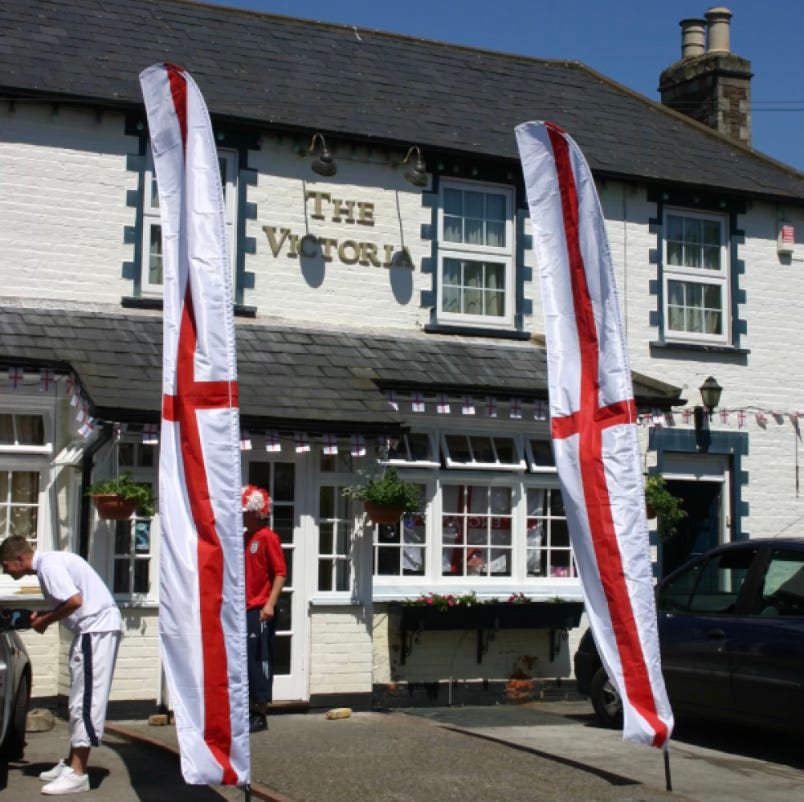
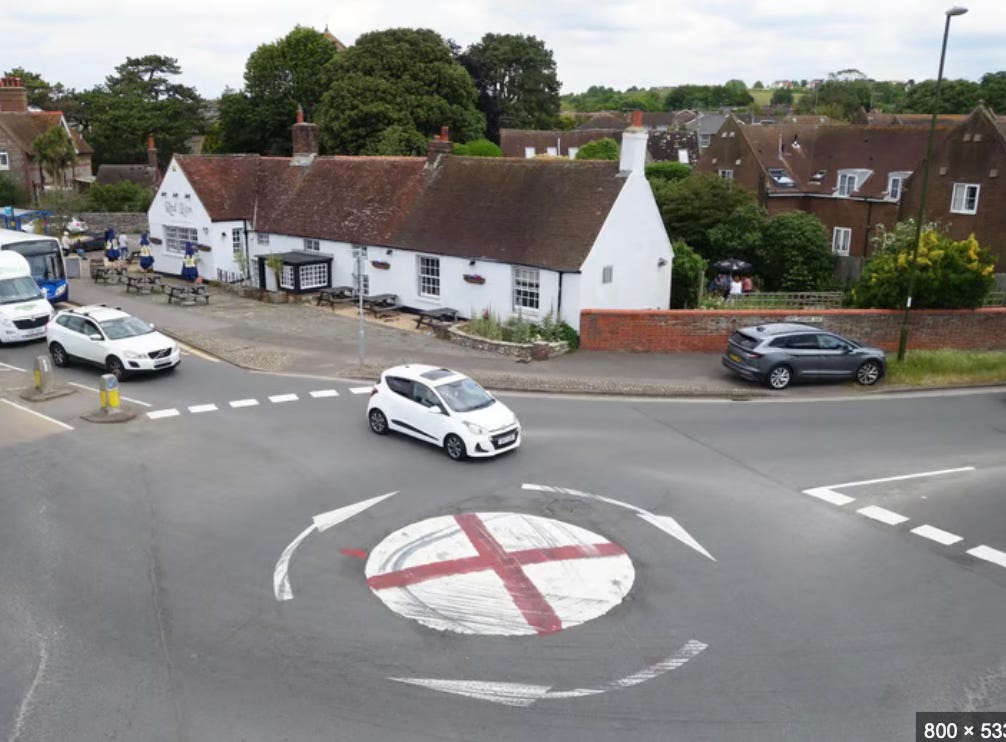
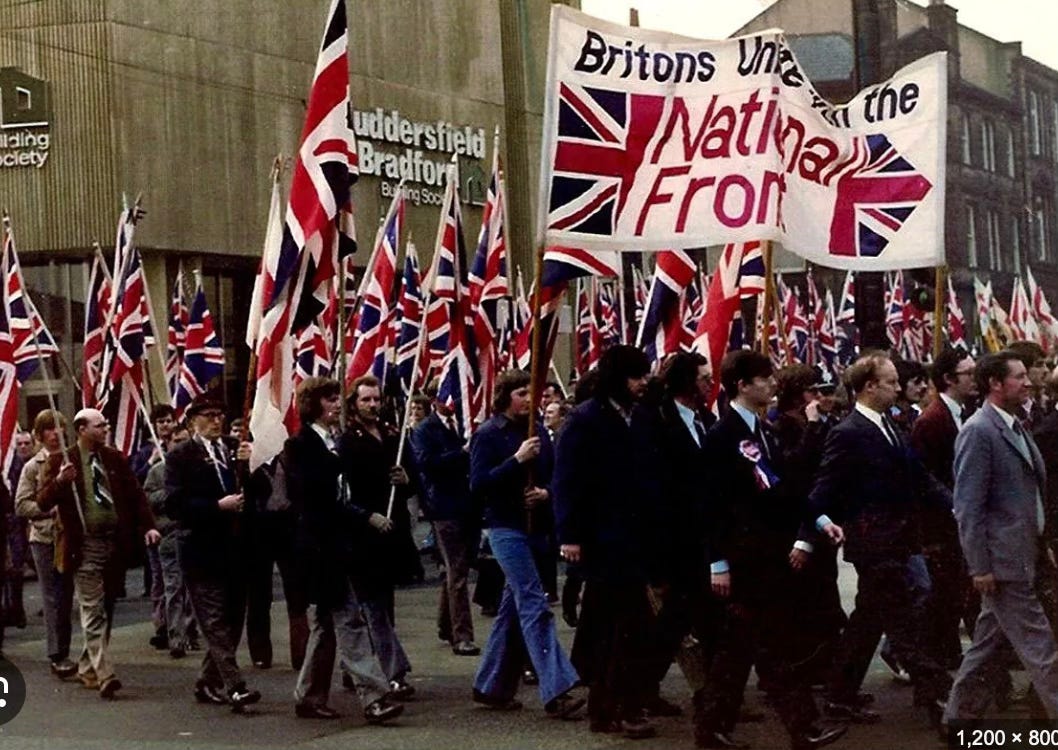

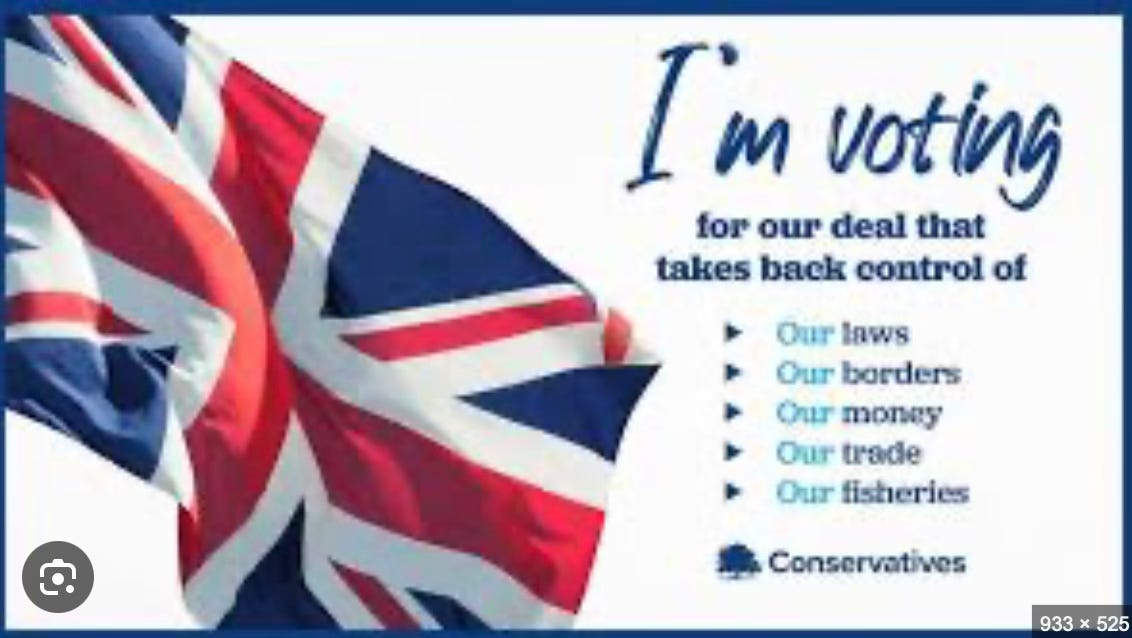
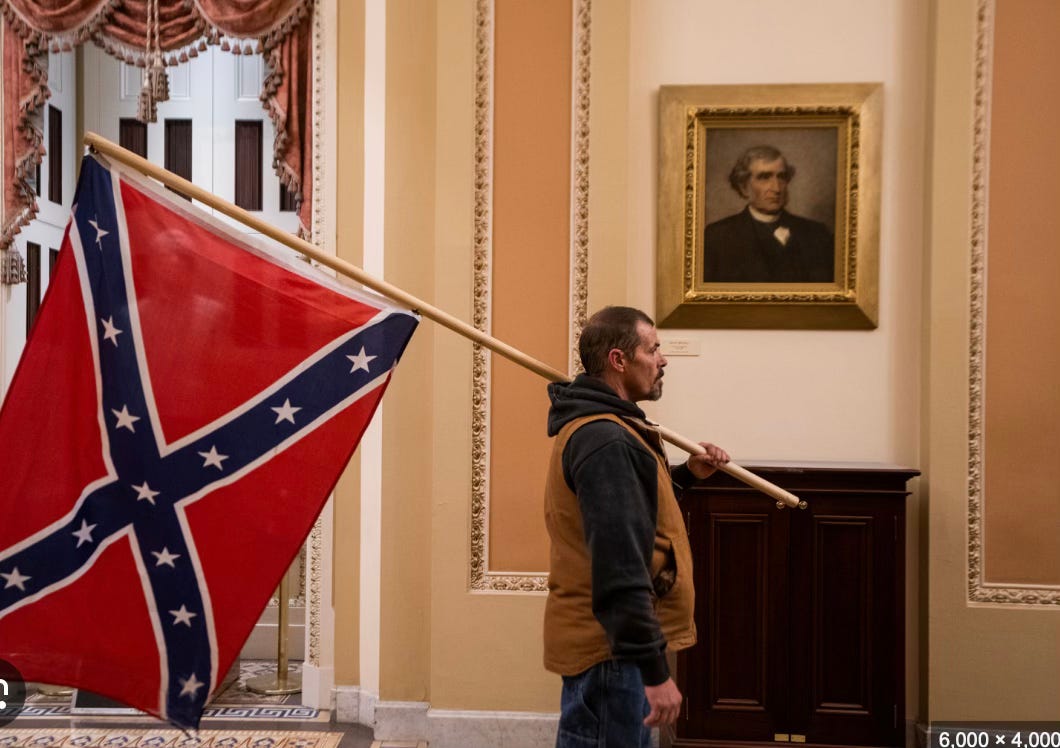
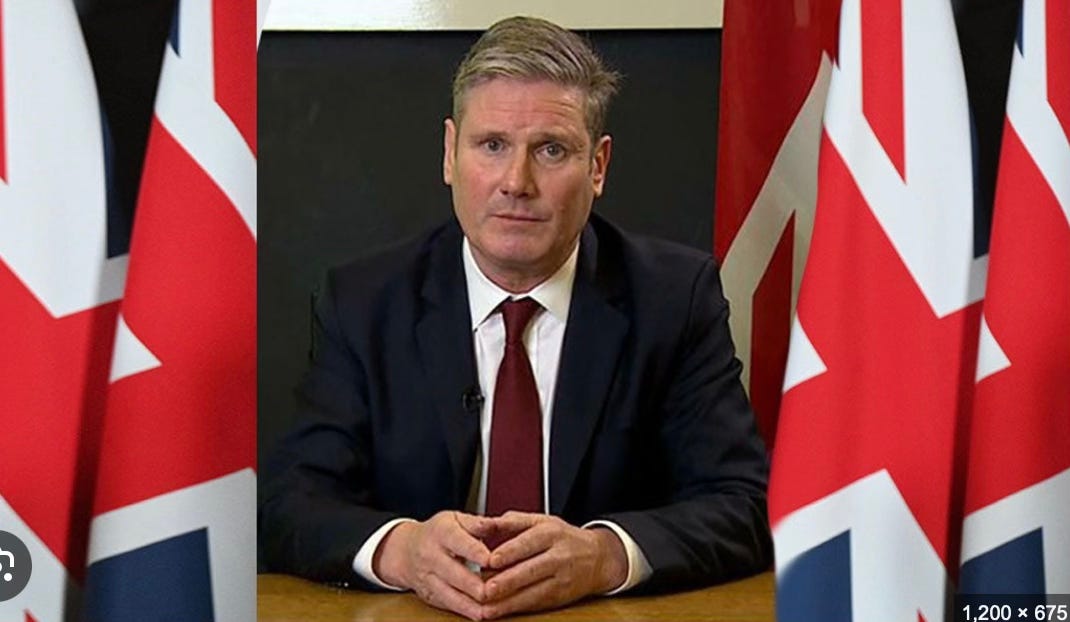
The flags in Bartley Green are flying at half mast. What does that tell us???